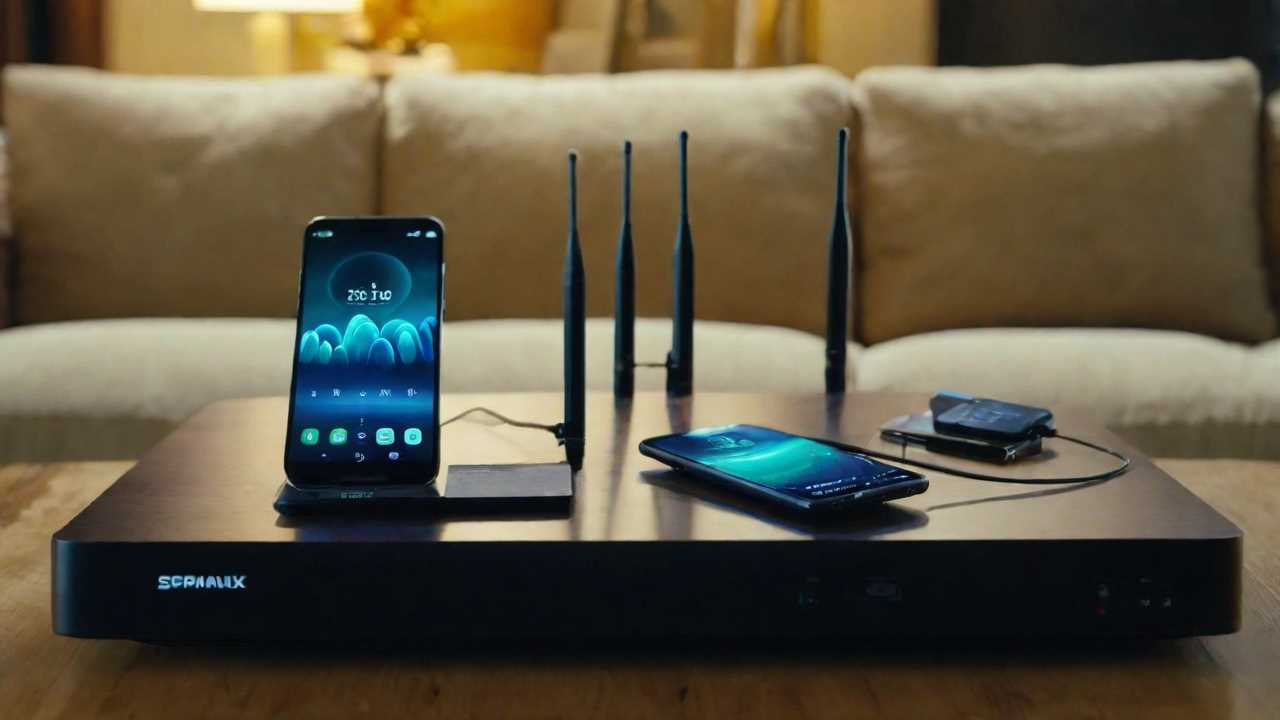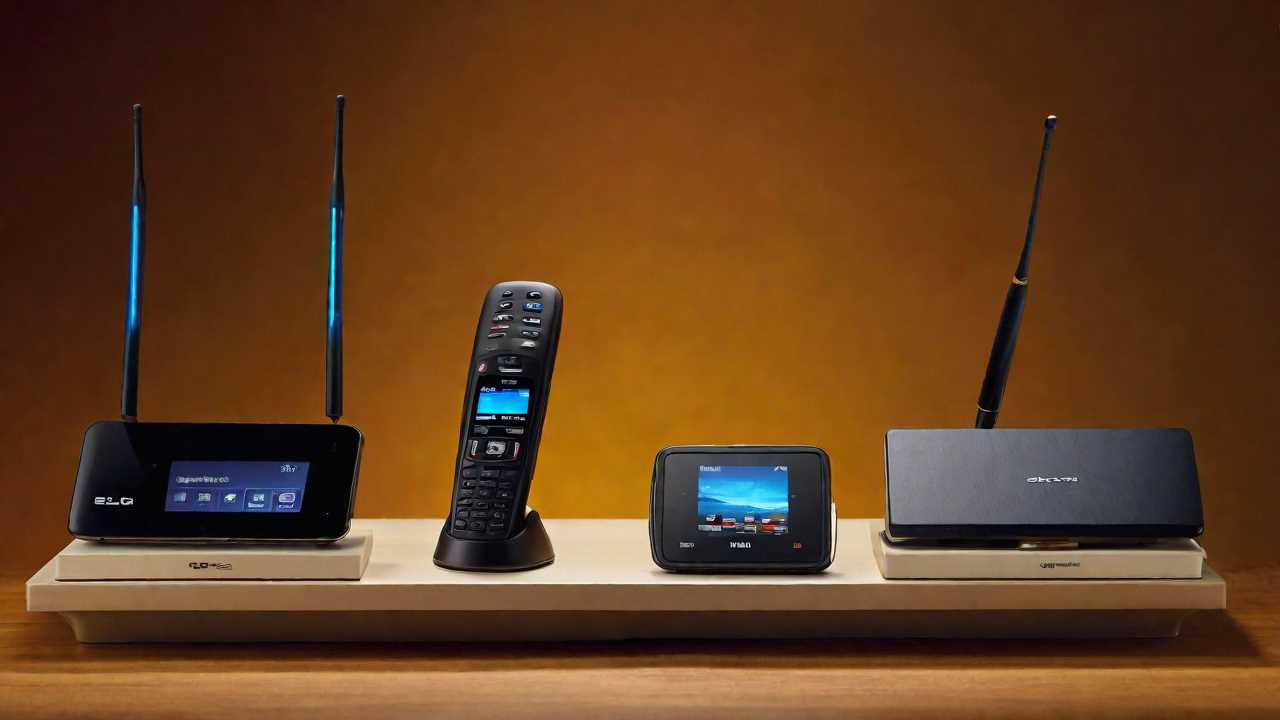
As the saying goes, ‘A stitch in time saves nine,’ and preemptively boosting your home’s cell phone signal can save you from countless dropped calls and data frustrations. You’re aware of the inconvenience that poor reception can bring, and you’re ready to take the necessary steps to enhance your connectivity.
However, navigating the plethora of signal booster options can be as complex as the technology itself. You need to know what will work best with your device, fit well within your living space, and provide the most bang for your buck.
In this guide, we’ll walk through the essential factors you must consider, such as understanding the different types of boosters, assessing your signal strength, and calculating the coverage area you need. This way, you can make an informed decision that ensures seamless communication within the comfort of your home.
Stay tuned to uncover how to select a device that won’t leave you guessing whether you’ve made the right call.
Key Takeaways
- Assess existing signal strength and identify areas with poor signal quality in your home.
- Choose a booster that is compatible with your carrier’s frequency bands and network technology.
- Calculate the total coverage area needed and select a signal booster that can cover that square footage.
- Consider the type of antenna needed based on the signal you want to enhance and the layout of your home.
Assessing Signal Strength

Before investing in a cell phone signal booster, it’s crucial to evaluate the existing signal strength in your home to determine what you truly need. You don’t want to overspend on a powerful booster if a less advanced model would suffice, nor do you want to underbuy and end up with a booster that can’t handle your signal needs.
You’ll start by checking your phone’s signal bars, but remember, they’re not always a reliable measure. For a more accurate assessment, you can access your phone’s settings to find the numerical signal strength reading, usually measured in decibels-milliwatts (dBm). A signal stronger than -85 dBm suggests that you’re in good shape, while anything below -110 dBm indicates poor signal quality.
Next, take note of the areas where signal falters. Are there dead zones in specific rooms or floors? This will inform the kind of booster you’ll need—one that covers multiple floors or one that strengthens signal in just one area.
Lastly, consider the external signal strength. A booster can’t create a signal where there’s none, it only amplifies what’s already there. So, step outside and check the signal. If it’s weak outdoors as well, you may need a more robust system to bring that outside signal in and boost it effectively.
Understanding Booster Types

Now that you’re aware of your home’s signal strength, it’s time to look at the different types of signal boosters you can choose from.
You’ll need to understand the basics of booster compatibility to ensure the one you pick works well with your cell phone.
We’ll also cover the various signal amplification options to help you make an informed decision.
Booster Compatibility Basics
Understanding the different types of cell phone signal boosters is key to selecting a device that’s compatible with your home network. First, you’ve got to identify whether you need an analog booster, which amplifies all cell signals using traditional technology, or a smart booster, which uses advanced tech to clean and amplify the signal. It’s essential to check if the booster supports your carrier’s frequency bands. Most boosters are broadly compatible, but some are carrier-specific.
Also, consider the booster’s generation – 3G, 4G, or 5G – to match your current service. Lastly, think about the number of users and devices; some boosters are built for individual use, while others can handle multiple connections. Choose wisely to ensure you don’t end up with a mismatch.
Signal Amplification Varieties
When choosing a cell phone signal booster, it’s crucial to differentiate between the main types: analog boosters and smart boosters, each with distinct amplification methods to suit various needs.
Analog boosters, also known as broadband boosters, are the traditional type. They amplify all cell signals, regardless of carrier, using standard gain. You’ll need an outside antenna and cables to connect to the booster unit.
On the other hand, smart boosters, or digital boosters, are more advanced. They use a processor to clean and amplify the signal, which can significantly boost your phone’s reception. They’re particularly effective for areas with extremely weak signals.
Smart boosters often have carrier-specific models and may offer features like automatic gain control for easier setup and optimal performance.
Compatibility Considerations

Before purchasing a cell phone signal booster, ensure it’s compatible with your carrier’s frequency bands and network technology. This means you’ll need to know the specific frequencies your carrier uses for 4G LTE, 3G, and if applicable, 5G services. Signal boosters are designed to work with certain frequency ranges, and picking the wrong one could mean ineffective amplification or none at all.
You also want to check whether the booster supports multiple carriers if you have devices from different providers in your home. Some boosters are carrier-specific, while others are universally compatible but may come at a higher cost. Remember, a booster that works with a wide range of frequencies can offer more flexibility if you switch carriers in the future.
Moreover, be aware of the network technology your carrier employs. With the ongoing rollout of 5G, if your carrier has started providing these services and you have a 5G-capable phone, you’ll want a booster that can support these newer networks to future-proof your investment.
Lastly, don’t overlook the importance of checking for any carrier approval or certification. Some carriers require signal boosters to be certified to avoid network interference, so choosing an approved model will save you from potential headaches down the line.
Coverage Area Calculation

Before you pick a signal booster, you’ll need to calculate the coverage area within your home.
Start by measuring the indoor space where improved signal is needed.
It’s also crucial to understand the existing signal strength to ensure the booster you choose can provide the boost you require.
Measure Indoor Space
To select an appropriate cell phone signal booster, you’ll need to accurately determine the square footage of the area requiring improved reception. Start by measuring the length and width of each room where you experience poor signal. Multiply these numbers to get the square footage for each room, and then add them up for the total coverage area.
Don’t forget to include hallways and any smaller areas that could benefit from a boosted signal. If you’re looking to improve connectivity in a multi-level home, you’ll need to perform these calculations for each floor.
Once you’ve got your total square footage, you’re primed to pick a signal booster that can handle your space, ensuring you’ll get the coverage you need where you need it.
Understand Signal Strength
Understanding the nuances of signal strength is crucial when choosing a cell phone signal booster, as it directly affects the coverage area your device will need to encompass. Signal strength is typically measured in decibels (dB), with higher numbers indicating a stronger signal.
You’ll need to assess the outside signal strength, as this will determine the booster’s amplification capacity required for your home.
To calculate coverage, consider that a stronger outside signal will generally allow a booster to cover more space. Conversely, a weaker signal might limit coverage to smaller areas.
You’ll also want to account for internal factors like building materials and layout, which can influence the effective range of the booster.
Antenna Selection Tips

When selecting an antenna for your cell phone signal booster, it’s crucial to consider both the type of signal you need to enhance and the physical layout of your home. You’ve got two main types to choose from: omni-directional and directional antennas.
If you’re looking to boost signal from multiple carriers and don’t mind a slightly less powerful boost, an omni-directional antenna is your best bet. It picks up signals from all directions, making it ideal for areas with signals coming from multiple cell towers.
On the other hand, if you’re in a remote location with your signal coming from a known direction, go for a directional antenna. It’ll require precise aiming but can capture a much stronger signal from further away.
Remember, the placement of your antenna matters immensely. Outside antennas should be mounted at a place where they’ll get the best signal, often on the roof or high on an exterior wall. Avoid obstructions and keep it distanced from metal objects to prevent signal interference.
Lastly, consider the antenna’s range and the dB gain it offers. Higher gain antennas can amplify weak signals better, but they often have a narrower reception angle. Make sure the antenna’s specifications match your needs before making a purchase.
Installation Requirements

Having selected the appropriate antenna for your signal booster, let’s focus on the installation requirements to ensure optimal performance within your home.
You’ll need to consider the best location for both the external and internal antennas. The external antenna should be placed where the signal is strongest, often on the roof or high on an exterior wall. You’ll want it pointing away from your home towards the nearest cell tower.
For the internal antenna, find a central spot where you spend most of your time using your phone. This is typically on a wall or ceiling in the middle of your home. Ensure there’s enough distance between the two antennas to prevent oscillation—a feedback loop that can reduce the system’s effectiveness.
You’ll also have to run cables from the external antenna to the signal booster, and from the booster to the internal antenna. Cables should be as short as possible to minimize signal loss, but long enough to reach without stretching. Make sure they’re properly secured and protected from the elements.
Lastly, the signal booster needs a power source. You’ll need an available power outlet, preferably one that’s not controlled by a light switch, to avoid accidental power-offs. Follow the manufacturer’s guidelines for grounding and lightning protection to safeguard your equipment.
Performance and Reliability

To ensure your investment pays off, it’s crucial to assess the performance and reliability of a cell phone signal booster before purchasing. You’ll want to look for a booster that consistently amplifies your signal without frequent interruptions. Check the specifications: the booster should handle the frequency bands your carrier uses and provide a substantial gain in dB (decibels).
Reliability also hinges on the quality of the components. Look for a reputable brand that uses durable materials and offers a warranty. This can be a telltale sign of the manufacturer’s confidence in their product. A good warranty will protect you against defects and ensure that you’re not left with a malfunctioning booster shortly after installation.
User reviews can be incredibly telling about real-world performance and longevity. Dive into customer feedback to see how well the booster performs under various conditions and over time. Don’t just focus on the positive reviews; pay attention to any recurring issues that are mentioned by multiple users.
Price and Warranty Evaluation

Understanding the performance and reliability of a cell phone signal booster sets the stage for evaluating its price and warranty, ensuring you get the best value for your money.
As you compare prices, don’t just look for the cheapest option; rather, weigh the cost against the features and benefits. A higher-priced booster may offer better coverage or a more comprehensive warranty, which could save you money in the long run.
Speaking of warranties, don’t overlook this crucial aspect. A good warranty not only reflects the manufacturer’s confidence in their product but also protects you in case of defects or performance issues. Look for a warranty that lasts at least a year, though some top-notch boosters might come with even longer coverage.
Frequently Asked Questions
How Do Weather Conditions Affect the Performance of Cell Phone Signal Boosters?
Weather conditions can impact your signal booster’s performance, as heavy rain, snow, or storms might weaken the signals it’s trying to amplify, causing potential disruptions or decreased call quality for you.
Can a Cell Phone Signal Booster Interfere With My Home Wi-Fi Network or Other Electronic Devices?
No, a cell phone signal booster won’t interfere with your home Wi-Fi or other devices. It’s designed to amplify cellular signals without disrupting other electronic systems you’ve got in place.
What Are the Legal Regulations Concerning the Use of Cell Phone Signal Boosters in Residential Areas?
You must check the FCC’s rules before using a cell phone signal booster, as they’re legally required to prevent interference with wireless networks and need registration with your cell service provider.
How Often Do Cell Phone Signal Boosters Need Maintenance or Updates to Remain Effective?
You’ll need to maintain your cell phone signal booster periodically, typically every few years, to ensure it continues to work effectively. Software updates might also be necessary as technology advances.
Can I Use a Single Cell Phone Signal Booster for Multiple Carriers if My Family Members Have Different Service Providers?
Yes, you can use a single cell phone signal booster for multiple carriers. It’ll amplify signals regardless of your family’s varied service providers, ensuring everyone stays connected under one robust system.
Conclusion
Now that you’ve got the lowdown on signal boosters, you’re ready to make a smart choice. Find one that fits your space and plays nice with your carrier. Don’t skimp on quality antennas and always check the installation needs. Remember, a reliable booster won’t break the bank but will come with a solid warranty. Invest in the right one and say goodbye to those frustrating dead zones in your home. Happy boosting!
More Cell Phone Signal Boster Articles
Please also read our Introduction To Cell Phone Signal Boosters article right here at www.stormscale.net and be sure to check out our other cell phone signal booster articles for more detailed reviews and information on signal boosters.
Next cell phone signal booster article:
Previous cell phone signal booster article:
